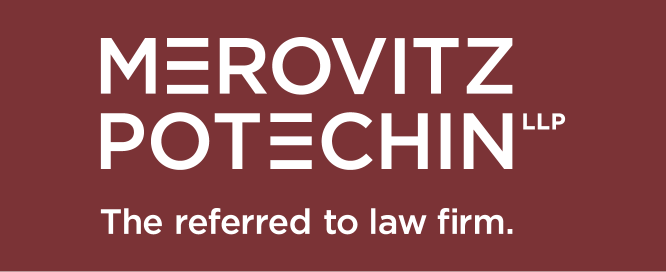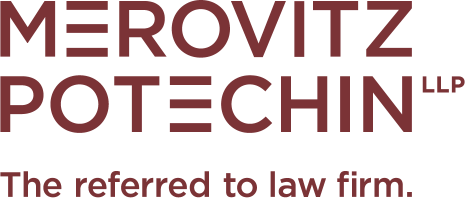The Employment Standards Act (“ESA”) in Ontario provides employees with various minimum entitlements under the law. Among the most significant are those dealing with employee entitlements at the time of termination. We often hear the term ‘severance pay’ applied to the payout upon termination, but under the ESA, there is both notice pay under Section 57 and severance pay under Section 64, both of which can be triggered at termination.
Notice pay entitlements
Notice pay requires no special circumstances to trigger the entitlement so long as the employee is not exempt under the legislation. Termination and an employee’s length of employment set the entitlement.
Severance pay entitlements
The entitlement to severance pay is guided by circumstances: the employee must have five years of service to qualify and either be part of a termination of employees totaling 50 within the past 6 months, or work for an employer that has a payroll of $2.5 million. It is that latter circumstance that we will discuss here. While the payroll element seems straightforward, when someone is employed in a smaller Ontario workplace of an extra-provincial or global employer, there have been questions as to how to apply this section of the ESA.
Hawkes v. MANA
The Ontario Labour Relations Board (“OLRB”) recently offered its guidance on this very question in Doug Hawkes v. Max Aicher (North America) Limited, 2018 CanLII 125999 (ON LRB). Mr. Hawkes was employed by Max Aicher (NA) Ltd. (“MANA”) and its predecessors between 1977 and 2015. MANA is a subsidiary of Max Aicher GmbH & Co KG (“MAG”), a global enterprise based in Germany.
Mr. Hawkes was terminated in October of 2015. He applied to the Ontario Ministry of Labour to make a determination as to what he was entitled to upon termination. As a result of that application and the subsequent investigation by an Employment Standards Officer (“ESO”), it was determined that Mr. Hawkes was entitled to termination pay under Section 57 of the ESA and vacation pay. The ESO determined that Mr. Hawkes was not entitled to severance under section 64 of the ESA as MANA did not have an Ontario payroll that reached the $2.5 million threshold and that payroll outside of Ontario of a related company was not to form any part of the analysis. Mr. Hawkes appealed this decision on the basis that MAGA’s global payroll should be the payroll taken into account when making the determination under Section 64 of the ESA as this approach is consistent with the goals of the ESA and recent case law.
In coming to its decision, the OLRB dismissed the approach taken by the Court in Paquette v. Quadraspec Inc., [2014] O.J. No. 5484. In that case, the Court determined that the entire Canadian payroll of the employer be taken into account for the purpose of determining whether the payroll threshold of Section 64 of the ESA was met. The OLRB also found that Paquette was distinguishable in that it only dealt with operations in Canada and did not deal with allegedly related companies, which was the relation between MANA and MAG. MAG had no employees in Ontario. In Paquette, there was only one employer and its employees being looked at for the payroll threshold determination were in Ontario and Quebec. In Hawkes, the employees were all over the world.
Most importantly for the OLRB in Hawkes was the application of the ESA itself:
To whom Act applies
3 (1) Subject to subsections (2) to (5), the employment standards set out in this Act apply with respect to an employee and his or her employer if,
(a) the employee’s work is to be performed in Ontario; or
(b) the employee’s work is to be performed in Ontario and outside Ontario but the work performed outside Ontario is a continuation of work performed in Ontario. 2000, c. 41, s. 3 (1).
In its decision, the OLRB points out that in Paquette, the Court did not deal with the interaction of Section 3 and Section 64 of the ESA. The OLRB looks at the pre-Paquette cases and determines that the ESA is only meant to apply to employment in Ontario. For the purposes of interpreting Section 64, this means limiting the payroll value to that which is found in Ontario. In its view, only Ontario based payroll and operations should be taken into account. As such, Mr. Hawkes’ appeal was denied and he was not entitled to severance pay under Section 64 of the ESA.
Severance pay threshold and termination pay entitlements
The severance pay threshold is so important for a dismissed employee because a finding of entitlement significantly increases the value of their termination entitlements automatically. Without the need to hire a lawyer, make a demand or start a claim, an employee can, depending on their length of service, more than double the payments they receive from their employer upon termination by right.
The Hawkes decision does not impact on a dismissed employee’s ability to seek common law notice of termination from the Court, which can be far greater than the minimum entitlements guaranteed under the ESA, even when an employee is entitled to severance under Section 64. What is notable about the Hawkes decision is that it starts off claimants with lower guaranteed entitlements where they worked for an employer who, despite having a global payroll that exceeds the threshold, has an Ontario payroll below $2.5 million.
If you are an employee and have any further questions about your rights upon termination, or if you are an employer looking for assistance in determining employee termination entitlements, please contact the employment law lawyers at Merovitz Potechin LLP.








